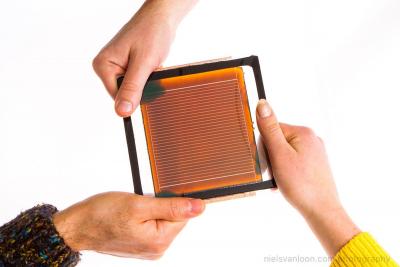In what is said to be a "major milestone toward commercialization", Solliance partners TNO, imec and the Eindhoven University of Technology demonstrated encapsulated perovskite solar modules fabricated using industrial processes that withstand three established lifetime tests, i.e. the light soak test, the damp-heat test and the thermal cycling test. It is for the first time this milestone is passed with scaled perovskite solar modules prepared by research organizations.

The efficiency and versatility of perovskite solar modules has generated a lot of interest in this novel solar energy technology. However, concerns have been raised about the stability of perovskite solar modules since the early devices, reported a decade ago, were only stable for minutes. By passing three rigorous aging tests, Solliance and its industrial partners take a major step towards commercialization of this novel solar technology.
The applied stress tests include 1000 hours continuous illumination at an intensity equal to one sun (light soak test); 1000 hours exposure to a high humidity (relative humidity of 85%) combined with exposure to a temperature of 85oC (damp-heat test); 50 thermal cycles from -40oC to 85oC (thermal cycling test).
During the light soak test the performance increased in the first 100 hours after which the performance stabilized. After the damp-heat test the perovskite module performance retained 95% of its initial performance, thus within the restricted efficiency loss limit to achieve a successful damp-heat test. The thermal cycling test did not impose any efficiency loss, indicating the excellent stability of the processed modules and the encapsulation strategy to withstand these harsh conditions.



